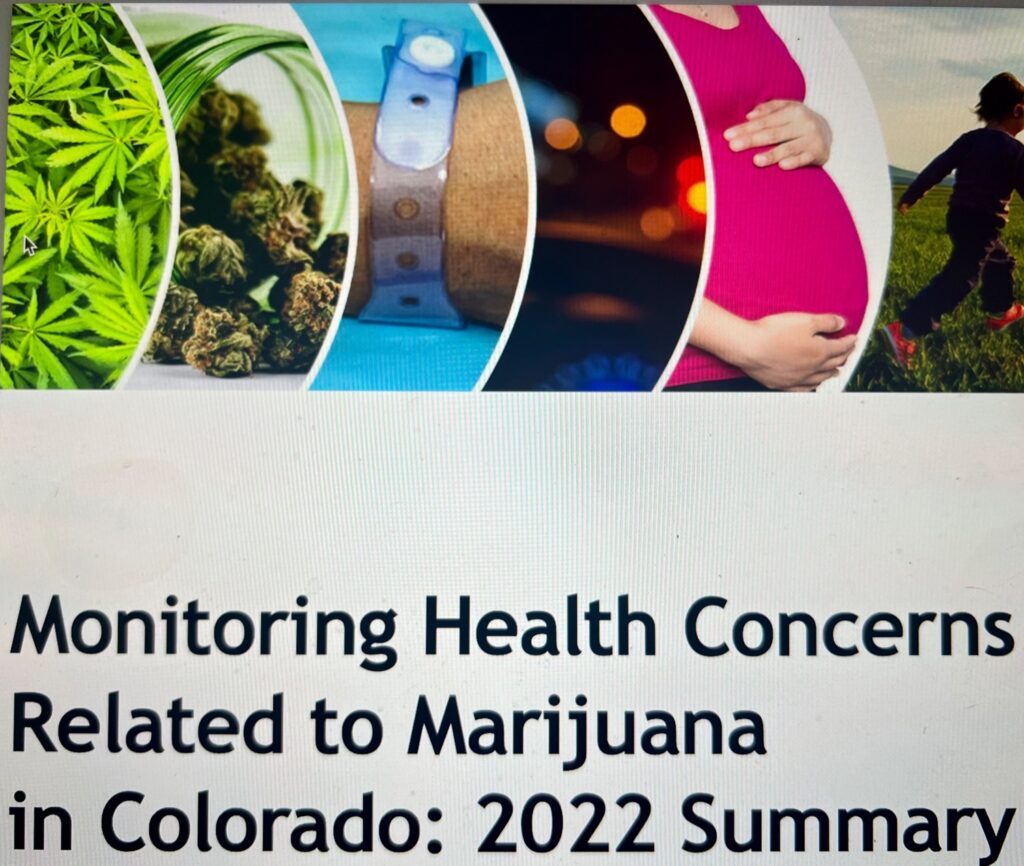
February 2, 2023
Dear Champion,
Our work at One Chance relies on data, trends, and evidence-based research to drive better outcomes including robust regulations and safeguards for communities and kids.
When marijuana legalization and sales began in 2013, Colorado’s General Assembly mandated the Colorado Department of Public Health & Environment (CDPHE) to produce a report every two years by January 31st on the health effects of marijuana use and trends in marijuana use among Coloradans. The 2022 summary and report were released this week and delivered to the General Assembly, the Colorado Department of Revenue, the state Board of Health–and now YOU!
We would like to thank the team at CDPHE and the Retail Public Health Advisory Committee for their dedication and tireless work in producing this report and the public health statements to protect kids and the public.
If you have any questions, concerns, or thoughts on using this data to create stronger regulations protecting the most vulnerable in your community, please reach out to our team at One Chance HERE.

We wanted to share significant findings around youth use, accidental ingestions, motor vehicle crash data, mental health associations, issues in rural areas, and evidence-based statements. Please find our brief analysis below. The entire report, CDPHE Monitoring Health Concerns Related to Marijuana, can be found HERE.
High School Students:
- Vaping THC among current users increased from 10.6% in 2019 to 15.7% in 2021
- 59.2% of current high school users that reported using said they used high-potency marijuana products, including THC concentrates, hash oil, or waxes.
- Current youth use was higher than the state average in several rural health service regions:
- #17 Clear Creek, Gilpin, Park, and Teller counties (21.4%)
- #9 Archuleta, Dolores, La Plata, Montezuma, San Juan counties (19.9%)
- #7 Pueblo County (19.6%)
Hospital and Poison Control:
- Hospitalizations with marijuana-related billing codes nearly doubled in children under the age of 6
- Poison center data involving marijuana have increased – with nearly half of all exposures involving children 5 and younger
Pregnancy and Breastfeeding Mothers
- Marijuana use during pregnancy remains highest among young mothers (age 20-24)
Adult and young adult use
- 19% of adults reported consuming marijuana within the past month- with past month marijuana consumption significantly higher among ages 18-34 years
- 52.3% of adult consumers used marijuana daily or near-daily
Encouraging news: One Chance works tirelessly to protect kids from today’s marijuana through transparency, education, empowerment, and policy–sharing our reliable resources with all those who care about kids.
- 13.3% of youth used marijuana within the past month- a decrease from 20.6% in 2019
- 60.4% of youth think regular marijuana use is risky – an increase from 50.1% in 2019
- Students driving after using marijuana decreased from 11.2% in 2019 to 5.5% in 2021
- 6.8 % of new mothers reported using marijuana during pregnancy, a decrease from 8.2% in 2019, and is less prevalent that alcohol and e-cigarette use
CDPHE’s Public Health statements identified as having Substantial Evidence on the Health Effects of Marijuana Use/Consumption on Adolescents and Young Adults
- Daily or near-daily marijuana use by adolescents and young adults is strongly associated with developing a psychotic disorder such as schizophrenia in adulthood.
- THC, a component of marijuana, can cause acute psychotic symptoms such as hallucinations, paranoia, delusional beliefs, and feeling emotionally unresponsive during intoxication. These symptoms are worse with higher doses.
- Marijuana use by adolescents and young adults is strongly associated with developing psychotic symptoms in adulthood, such as hallucinations, paranoia, and delusional beliefs. The risk is higher with more frequent use and among those who start using marijuana at a younger age.
- Daily or near-daily marijuana users can experience withdrawal symptoms when abstaining.
- Marijuana users can become addicted to marijuana.
- Weekly or more frequent marijuana use by adolescents is strongly associated with failure to graduate from high school.
CDPHE’s Public Health statements identified as having Substantial Evidence on the Health Effects of Marijuana Use/Consumption on Driving
- Driving soon after using marijuana increases the risk of a motor vehicle crash.
- Using alcohol and marijuana together increases impairment and the risk of a motor vehicle crash more than using either substance alone
- The typical marijuana cigarette or joint in Colorado contains approximately 0.5 grams of marijuana, and the THC content in marijuana ranges from 12-23%THC; therefore, a typical joint contains between 60-115 mg THC. For less-than-weekly marijuana users, smoking marijuana containing 10mg or more of THC is likely to cause impairment that affects your ability to drive, bike, or perform other safety-sensitive activities.
There is still much to do to continue to protect our kids from THC. We will continue to update you with the most current information and science and please follow One Chance on Twitter, Facebook, LinkedIn, and Instagram for THC news, research, and resources. Thank you for your continued and needed support and please continue to share our resources widely with your networks!
Grateful to you,
Your One Chance to Grow Up team

